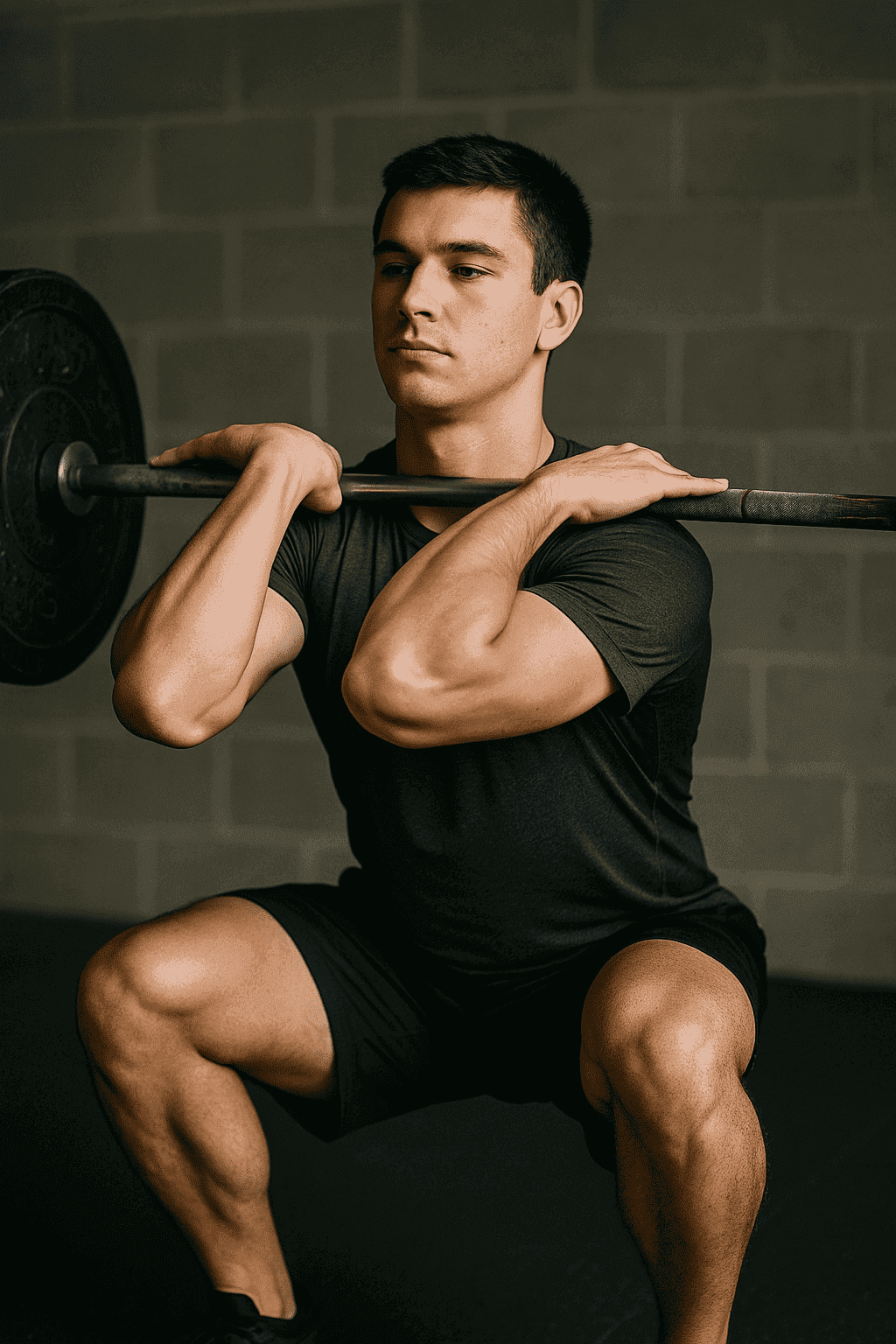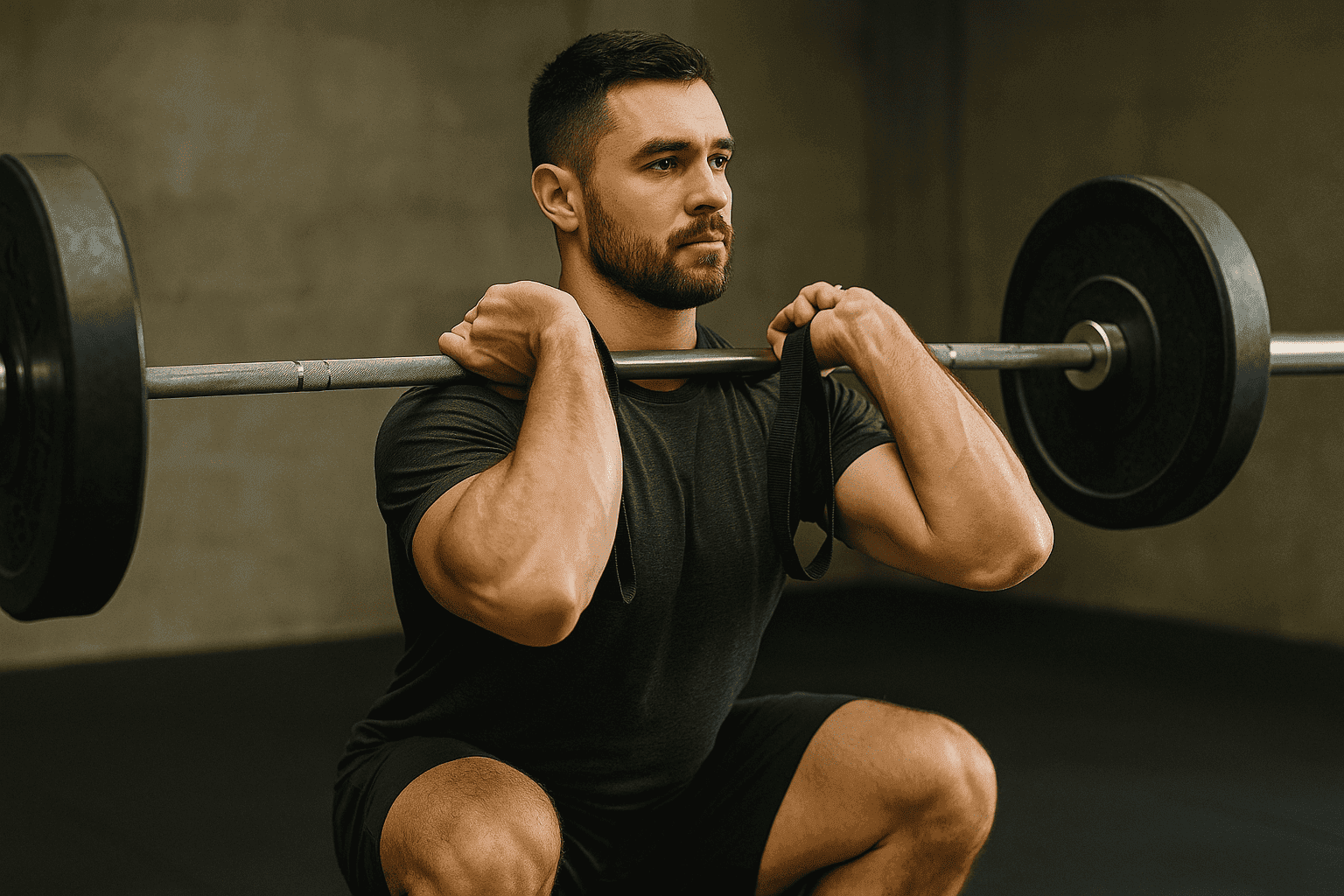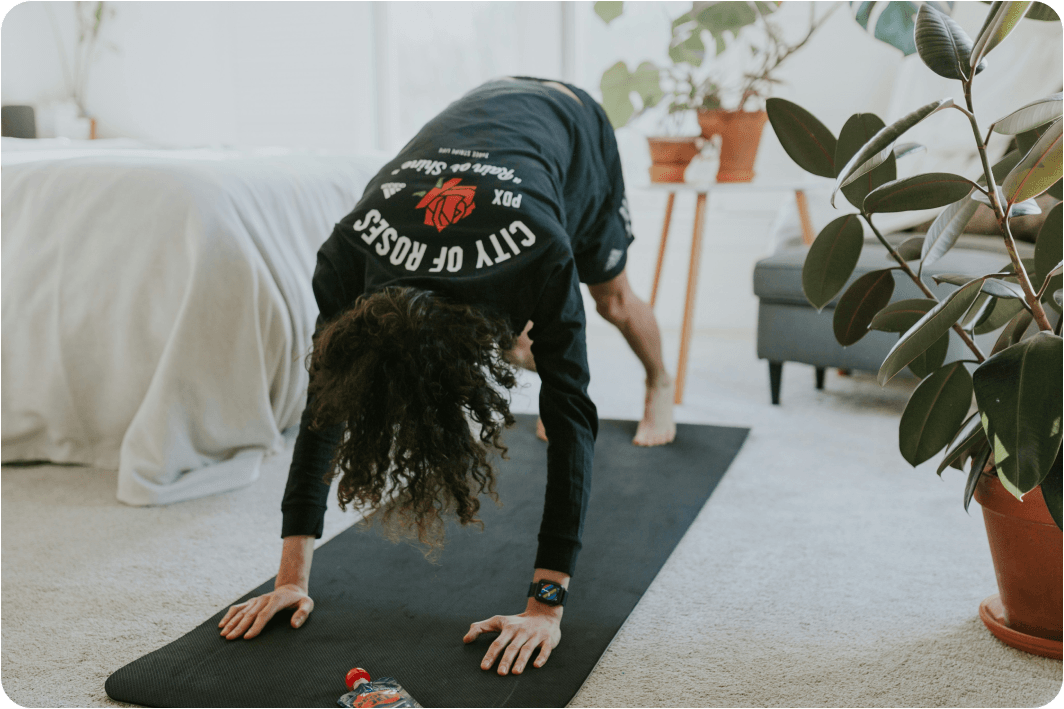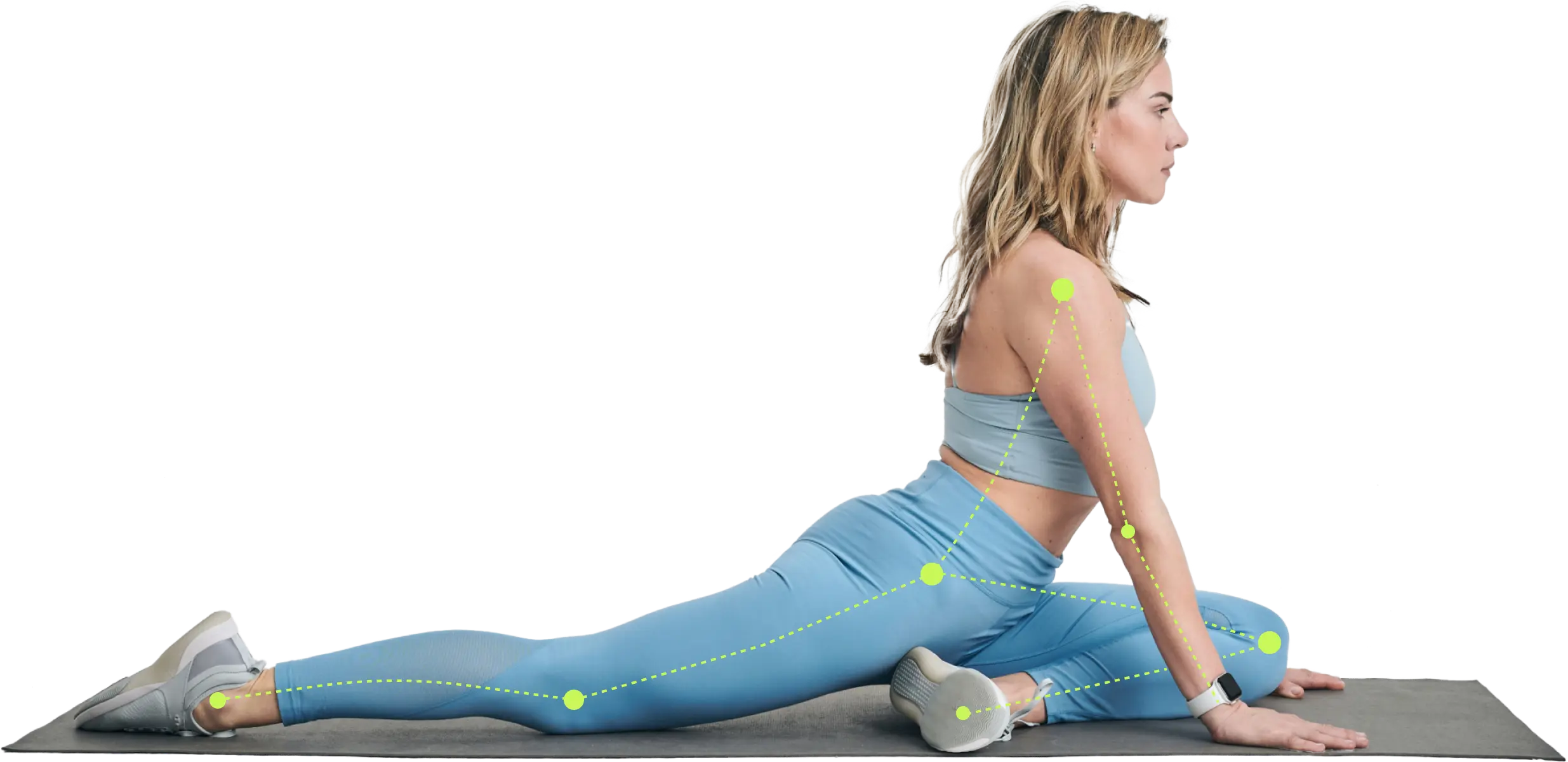Enhance your front squat with proper grip and hand positioning. Our guide details how to position your hands for maximum efficiency and safety.
![The Front Squat Hand Position Basics [Optimize Form]](/_next/image?url=%2Flibrary%2Fthe-front-squat-hand-position-basics-optimize-form-preview.png&w=3840&q=75)
Front squats are one of the most effective strength training exercises, but mastering the front squat hand position is what makes the movement efficient, safe, and sustainable. The way you grip the bar, set your elbows, and stabilize your rack position will determine whether your lift feels smooth and powerful or awkward and painful. This guide explains different front squat grips, their benefits and limitations, and how to optimize your rack hold for long-term progress.
Key takeaways
- The front squat hand position directly affects posture, bar stability, and comfort.
- Multiple front squat grips exist, including clean grip, cross-arm, and strap-assisted options.
- Mobility in the wrists, shoulders, and upper back plays a major role in achieving a proper front rack position.
- Common errors such as letting the elbows drop or gripping too narrow can limit performance and increase injury risk.
- With practice and the right variation, anyone can find the best grip for their body mechanics.
What is a front squat?
A front squat is a barbell squat variation where the bar rests across the front rack position of the shoulders rather than on the upper back. The lifter maintains an upright torso while keeping the elbows lifted, preventing the bar from rolling forward. This form emphasizes quadriceps strength, core stability, and upper back endurance more than a back squat, making it a staple in Olympic weightlifting, CrossFit, and bodybuilding. Compared to an olympic squat, the front squat requires more bar control and mobility through the shoulders.

Muscles worked
Front squats target the quadriceps, but they also engage the glutes, hamstrings, and calves in the lower body. The core, upper back, and shoulder blades stabilize the lift, while the arms and elbows maintain grip and rack control. Improving strength here is not only beneficial for performance but also helps maintain a healthier body composition.
Who should do front squats
Front squats benefit athletes across disciplines. Weightlifters rely on them to build the upright posture needed for cleans, while bodybuilders use them to isolate the quads. Recreational gym-goers can use front squats to improve strength balance and posture, and athletes in rehab may find them less stressful on the lower back compared to back squats. For beginners starting with at-home exercises, adding front squats later in training offers a major step-up in strength progression.
Benefits of front squats
- Promotes stronger quadriceps development due to the upright torso.
- Builds core stability and improves posture.
- Transfers well to Olympic lifts such as the clean.
- Reduces stress on the lower back compared to back squats.
- Encourages mobility in the wrists, shoulders, and hips.
These benefits also make front squats a helpful accessory when planning how to structure your training with variations like squat accessory lifts or deciding whether to program squat or deadlift first.
Drawbacks of front squats
- Can be uncomfortable on the wrists and shoulders for those with poor mobility.
- Requires more technical precision than back squats.
- The bar position may feel unstable without proper practice.
- Some lifters struggle to maintain upright elbow positioning, leading to poor form.
Those who lack mobility often benefit from supportive variations such as squats with plate under heels or using squat machines to build strength before transitioning to full front squats.

Types of front squat hand positions
The correct front squat hand position depends on your training goals, anatomy, and mobility. Below are the main front squat grips and how to use them.
Clean grip (Olympic grip)
This is the standard grip used in Olympic lifting. Fingers rest under the bar, elbows point forward, and the front rack hold sits across the shoulders.
Benefits
- Best transfer to cleans and Olympic lifts.
- Builds wrist, shoulder, and upper back mobility.
- Secure bar control when mastered.
Drawbacks
- Requires high wrist and shoulder flexibility.
- Beginners often experience discomfort at first.
Cross-arm grip
The cross your arms method involves placing the bar on the shoulders and crossing the arms to stabilize it. The elbows remain high while the hands press lightly on the bar.

Benefits
- Easier for those with limited wrist mobility.
- Comfortable for bodybuilding-style training.
- Allows focus on quad development.
Drawbacks
- Less secure than the clean grip.
- Not transferable to Olympic lifts.
Strap-assisted grip
Straps are looped around the bar, and the lifter holds the straps instead of directly placing fingers under the bar.
Benefits
- Reduces wrist strain.
- Improves accessibility for lifters with poor mobility.
- Allows upright front squat form grip without discomfort.
Drawbacks
- Requires proper strap setup to be safe.
- Less stable than clean grip for heavy Olympic lifting

Common front squat grip mistakes
Dropping the elbows
When the elbows drop, the bar position shifts forward, pulling the lifter out of balance. To avoid this, focus on driving elbows up and keeping the upper back engaged.
Over-gripping the bar
Many lifters think they need a tight grip, but in reality, the hands only guide the front rack hold. Keeping fingers under the bar lightly while letting the shoulders carry the load prevents wrist pain.
Narrow grip width
Using too narrow of a front squat grip width limits mobility and strains the wrists. Start with a slightly wider placement and adjust based on flexibility.
Poor mobility preparation
Lifters often ignore mobility in the wrists, shoulders, and thoracic spine, which limits proper front squat hand placement. Incorporating mobility drills can improve comfort and positioning. Test your flexibility to determine where you need to improve. For those training without equipment, combining front squat drills with at-home exercises helps build balanced strength.

Tips on mastering front squat hand positions
- Prioritize mobility: Work on wrist extensions, shoulder stretches, and thoracic spine drills.
- Engage the core: A strong core keeps the torso upright and stable during the lift.
- Think elbows up: Keep the elbows high to prevent the bar from rolling forward.
- Use progressive grip practice: Start with cross-arm or strap-assisted grips, then gradually transition to the clean grip if needed.
- Adjust bar placement: The bar should rest on the shoulders and collarbone, not in the hands.
For a complete program to improve your squat strength and mobility, Zing can give you guidance on variations like trap bar deadlift vs squat and how they complement the front squat.
Final thoughts
The front squat hand position is more than just where your fingers sit. It determines how the lift feels, how stable the bar remains, and how effectively your body transfers power. Whether you use the clean grip, cross-arm grip, or strap-assisted grip, the key is to find a position that supports your goals while minimizing discomfort. With patience and consistent practice, mastering your front squat grip will unlock better performance, safer lifting, and stronger overall development. Developing this skill also makes it easier to decide how front squats fit into a program that includes trap bar deadlift vs squat, olympic squat variations, or even experimenting with squatting barefoot for a different training stimulus.
FAQ
Authors
Medically reviewed
Zing's Science ExpertsA team of dedicated experts in the fields of health, medicine, fitness and science.
![Deciding to Squat or Deadlift First [Training Choices]](/library/squat-or-deadlift-first-preview.jpg)
![Clean and Press vs Clean and Jerk Guide [Lift Breakdown]](/library/clean-and-press-vs-clean-and-jerk-preview.jpg)
![Guide to Behind-the-Back Deadlifts [Technique & Benefits]](/library/behind-the-back-deadlift-preview.webp)
![High Rep Deadlifts for Growth [Increase Strength & Stamina]](/library/high-rep-deadlifts-preview.jpg)
![Rack Pulls vs Deadlifts Compared [Strength Showdown]](/library/rack-pulls-vs-deadlifts-preview.jpg)
![Trap Bar Deadlift vs Squat Comparison [Choosing Your Move]](/library/trap-bar-deadlift-vs-squat-preview.jpg)

![Best Deadlift Accessories Reviewed [Boost Your Lift]](/library/deadlift-accessories-preview.jpg)
![Mastering the Pause Deadlift [Elevate Your Training]](/library/pause-deadlift-preview.jpg)
